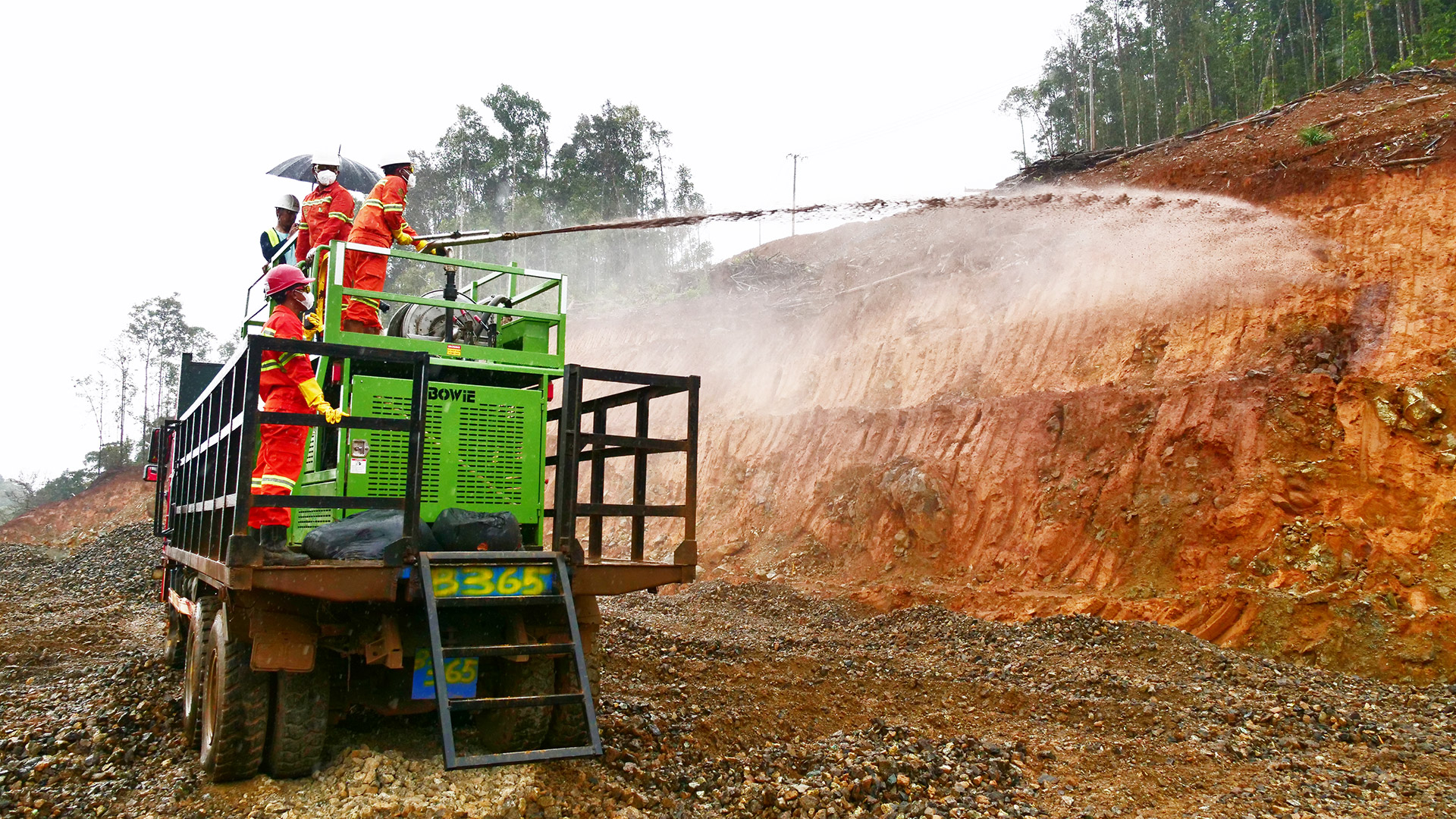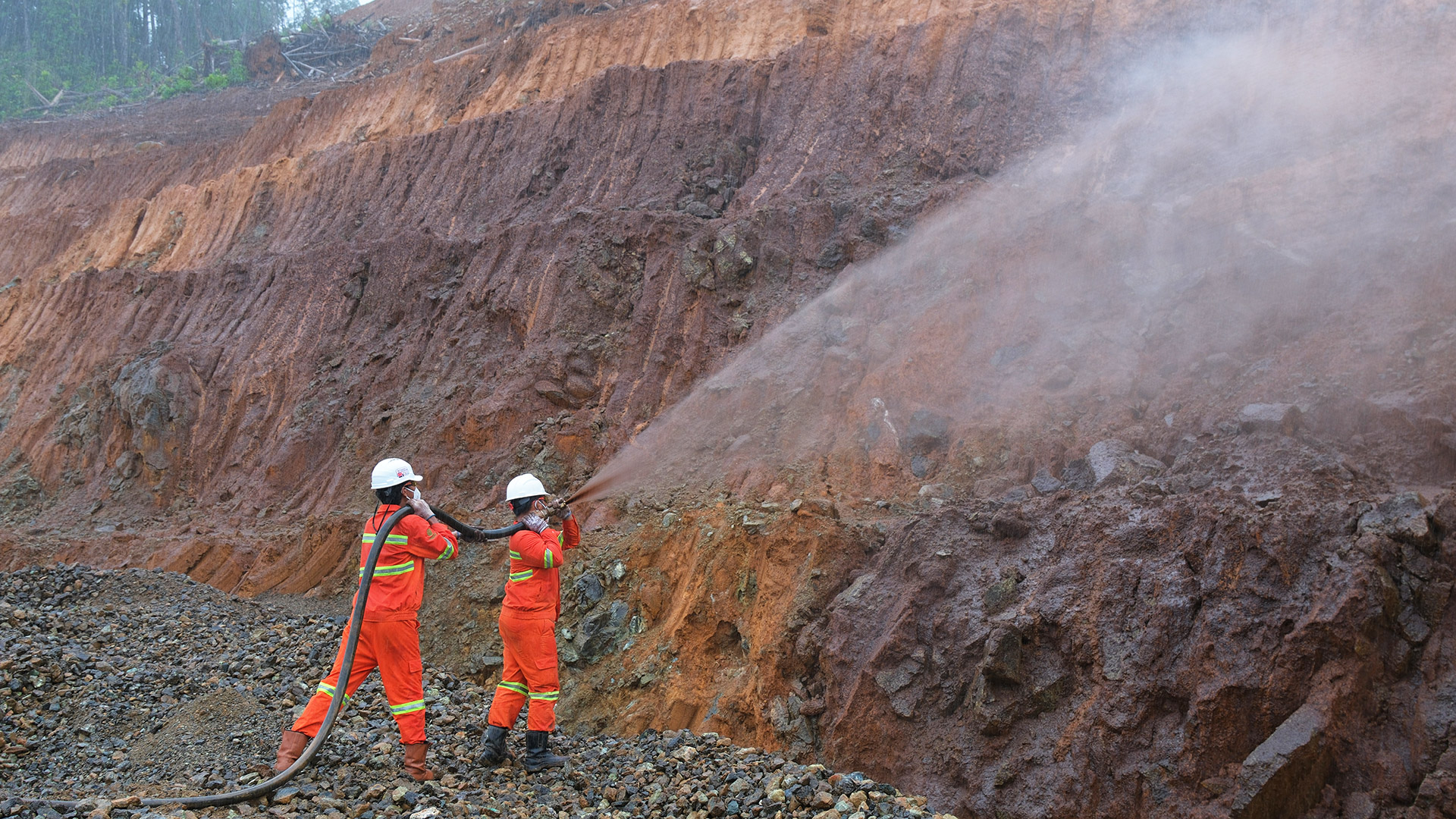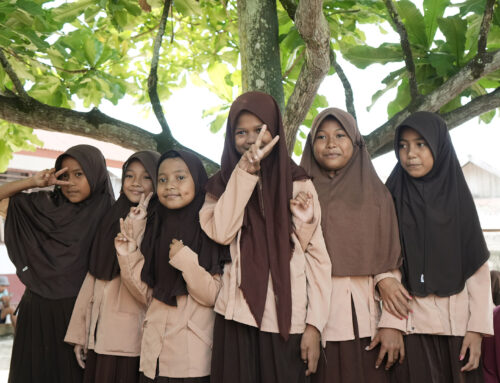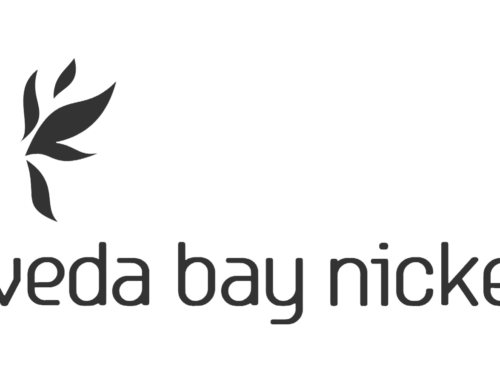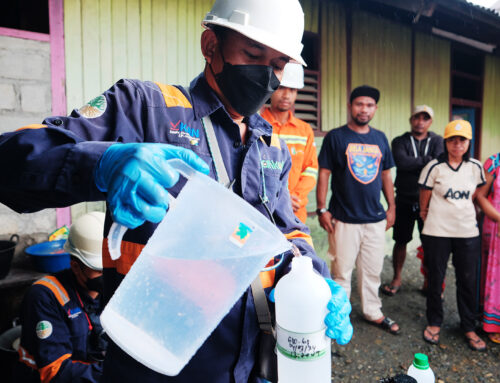In addition to manual planting, Weda Bay Nickel’s environmental teams now use hydroseeding equipment, thanks to the acquisition of a dedicated truck. This solution involves massively spraying seeds contained in a substrate, which is then attached to the walls to be revegetated. This tried-and-tested technique is very fast and delivers excellent results. A mining operation is part of a long cycle including several successive phases, from exploration to land reclamation, with an official mining plan incorporating measures to “Avoid, Reduce, Rehabilitate and Compensate” for the impacts of mining activities.
Weda Bay Nickel aims to revegetate 500 hectares per year by 2025.
To achieve this, an initial nursery with a production capacity of 180,000 plants per year is already operational, and two others are scheduled for delivery in 2024. They will be set up as close as possible to the new mining sites.
48 endemic species are raised in the nursery, from collected seeds or cuttings. The company’s environmentalists use the top soil set aside before mining, as well as a substrate derived from waste recycling thanks to an investment in a processing plant. In 2023, Weda Bay Nickel will have revegetated 38 ha, as the open mine sites are still being mined and will only be rehabilitated and revegetated once they have been closed. At the same time, the company has reinforced 869 ha of watersheds as part of its environmental obligations.
The areas exploited by PT Weda Bay Nickel will eventually be systematically reforested or compensated, with the aim of achieving zero net loss of biodiversity.

